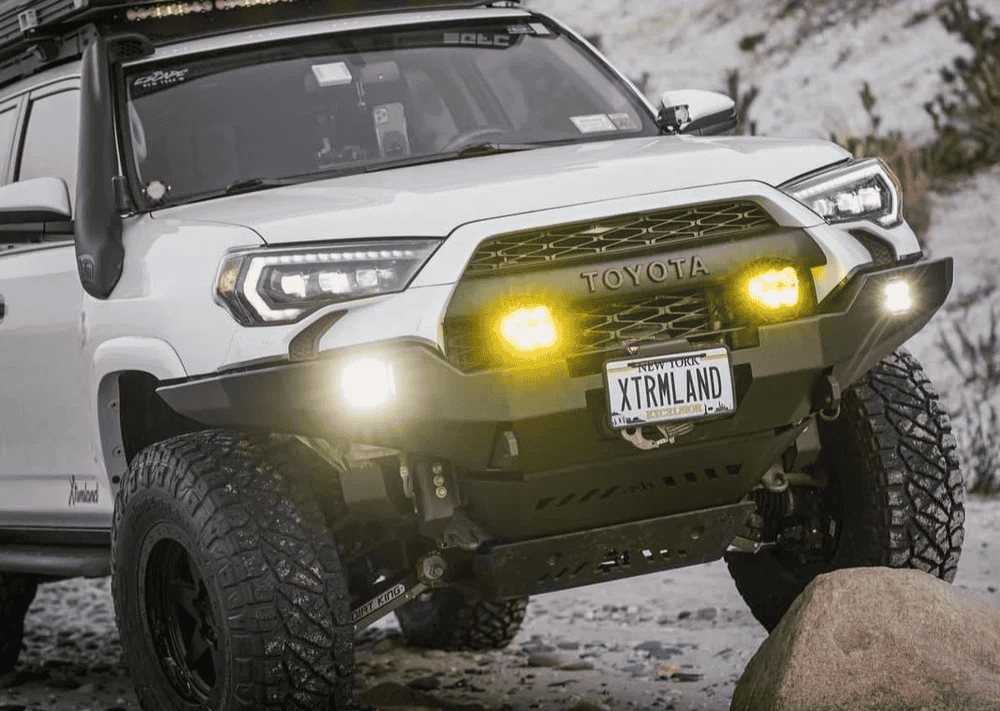Overland Vehicles

Rust forms when steel, oxygen, and water meet, and that mix accelerates with salts and fine grit. Off road use adds constant exposure to mud, clay, creek crossings, snowmelt, and dusty roads that trap moisture against metal. The undercarriage, frame rails, crossmembers, skid plates, rockers, pinch welds, wheel wells, and brake and fuel line brackets are frequent trouble spots. Paint chips from gravel or a jack point scuff become the first breach. Once corrosion creeps under adjacent coatings, it spreads like a coffee stain, quietly undermining strength and hardware serviceability.
The chemistry is simple, but the real story is time and trapped moisture. Clay holds water against steel far longer than a quick hose off suggests. Road salt lowers the freezing point and speeds the reaction even in cold conditions. If you prevent build up, seal access points, and dry the vehicle completely, you cut off the reaction before it starts.
A reliable rust prevention routine is about timing, contact, and airflow. After any muddy or salty outing, rinse the undercarriage with low pressure water to float away grit rather than drive it deeper. Aim at frame pockets, skid plate edges, rockers, pinch seams, spring perches, control arms, and behind the wheels. Avoid hot brakes and freshly heated exhaust to prevent flash corrosion and warping. Once clean, a full dry is as important as the rinse. Short drives help sling water from cavities, and a box fan under the vehicle accelerates airflow where drip drying falls short.
Make inspections part of the habit. Look for fresh chips, scuffs on sliders, gouged skid plates, or missing plastic plugs in frame holes. Small repairs now save large repairs later. If you spot orange dust or bubbling paint, neutralize and seal it before it lifts more finish. Resist the urge to layer thick grime hiders over active rust. Trapped corrosion grows in the dark.
Not all protection is equal. Quality underbody coatings provide a barrier that resists abrasion and chips from gravel and trail debris. Focus on flexible formulations with strong adhesion so they do not crack under flex. Cavity waxes creep into seams and boxed sections, displacing moisture. A thin film oil or wax inside the frame can be more effective than thick layers outside it because it reaches where rust starts. For hardware, stainless fasteners and zinc plated components resist corrosion and make future service easier. Skid plates should be easy to drop and clean, then recoat at wear points before reinstalling.
Tires throw stones that act like sandblasters, so inner fender liners deserve attention. Clean them and apply a protective layer that repels water and reduces grime bonding. Clear film on high strike areas, such as rocker panels and lower doors, preserves paint integrity. If you cross streams, pause afterward to let heat dissipate before rinsing. Sudden cold water on hot components can lift coatings and create microfractures.
The best rust prevention strategy maps exposure, protection, and service. Think in terms of seasons and regions. Desert dust calls for frequent gentle rinses and underliner cleaning. Coastal or northern routes require fast turnarounds after brine or tidal splash. Schedule an annual deep clean with full skid plate removal, fastener inspection, and touch up of coating layers. Replace compromised clips and grommets so water does not migrate into cavities. Keep drain paths clear in doors, rocker panels, and tailgates so moisture can escape.
When you build or upgrade an off road vehicle, specify corrosion minded details. Choose coatings that match your environment, add cavity protection to boxed sections, and align skid plate designs for easy service. The payoff is confidence on rough roads and fewer surprises at the next inspection.
If you want a protection plan engineered into your rig from day one, explore Overland rigs built for the long haul. Integrating coatings, access for cleaning, and serviceable hardware at the build stage saves time and keeps performance steady.
Planning an upgrade path or full protection refresh around your use case is easier with specialists who live in this world. Our team designs and installs packages that prioritize cleanable geometry, sealed penetrations, and corrosion resistant fasteners through Custom overland upfit services.
Curious how we approach durability, from materials to handoff? See our process and customer experience at Why choose OZK Customs. We build vehicles that work hard, stay serviceable, and come home ready for the next trip.
Bring your vehicle to Fayetteville and we will map a corrosion prevention plan built around your trails, climate, and mileage. From underbody coatings to cavity protection and hardware swaps, we make sure the parts you rely on stay clean, dry, and easy to service so your rig can keep rolling.
Ready to keep corrosion from stealing your road time? Fill out the form and our Fayetteville team will map a protection plan for your rig, from underbody coatings to hardware swaps and sealing. See how our overland builds stay clean, dry, and serviceable year after year with OZK Customs.
ADDRESS:
6159 E Huntsville Rd, Fayetteville, AR 72701
PHONE:
(479) 326-9200
EMAIL:
info@ozkvans.com